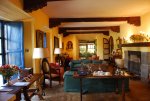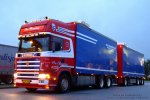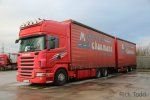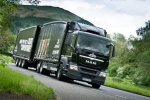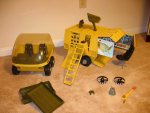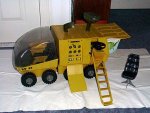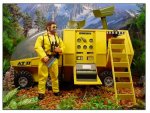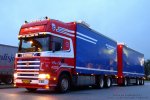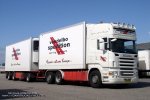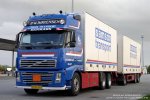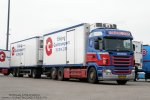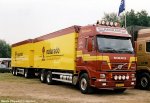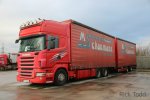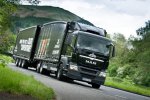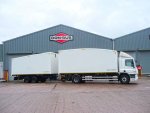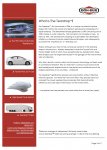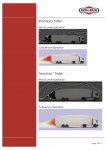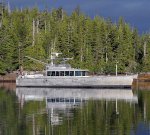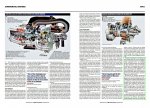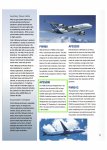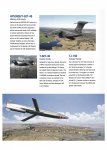biotect
Designer
.
CONTINUED FROM PREVIOUS POST
**************************************************
6. Equine Tourism as a portal to farm glamping
**************************************************
As most people know, tourism companies have rapidly multiplied over the last few decades, with the fastest growing and most successful being those that serve niche markets, for instance, African safari tourism, charter-boat tourism, diving tourism, bird-watching tourism, garden tourism, opera tourism..... the list is endless. There also exists a niche known as "equine tourism", and equine tourism companies could serve the TerraLiner as veritable world guides to farms that have horses across the planet. Many equine tourism companies offer horseback riding tours that run from point A to point B, staying at various farms or eco-lodges along the way. Like hiking tourism, only with horses -- see http://www.equestrian-escapes.com/about-us/ , http://www.unicorntrails.com/latinamerica/ecuador/avenueofvolcanoestrail/ , http://www.unicorntrails.com/latinamerica/ecuador/wildandes/ , https://www.inthesaddle.com/rides/view/41_cotopaxiadventure_andes_ecuador , and http://www.equitours.com/horseback-riding/hacienda-to-hacienda-ride/ .
Now here is the thing: farms that have large stables and ample riding facilities, will also host competitions, and at competitions horse-lovers will bring their own horses in specialized campers called "horse-boxes". We have already seen horse-boxes earlier in the thread. For instance, Ketterer horse-boxes were already mentioned on pages 3 and 11 at http://www.expeditionportal.com/for...w-6x6-Hybrid-Drivetrain?p=1566706#post1566706 and http://www.expeditionportal.com/for...w-6x6-Hybrid-Drivetrain?p=1562631#post1562631 , and also see page 76 at http://www.expeditionportal.com/for...ybrid-Drivetrain/page76?p=1674213#post1674213 . Horseboxes other than Ketterer were then discussed at length in a posting series from #1182 to #1186, at http://www.expeditionportal.com/for...w-6x6-Hybrid-Drivetrain?p=1742940#post1742940 and following. Horse-boxes are part mobile horse-stable, and part luxury camper. So any riding center or equestrian farm that allows people to visit with their own personal horse-boxes, and camp in them, is in effect an RV campground that accepts very large motorhomes, because horse-boxes are almost never small.
Recall that horse-boxes often have configurations that look very much like 3-axle freight trucks towing drawbar trailers, except that horse-boxes typically look more posh, like Class-A motorhomes with slide-outs:

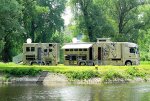
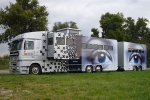
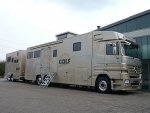
So I figure that one major source of information that TerraLiner owners will want to consult, is equine tourist companies and their websites. Where large horse-boxes can camp, the TerraLiner should also be able to camp. Indeed, I strongly suspect that Hacienda Zuleta has already seen its fair share of big horse-boxes staying for a few nights to participate in equine competitions, or perhaps longer for diverse reasons. It's just a hypothesis, and I have not researched this very far yet. But large horse-boxes and horse-trailers are a substantial sub-niche in the RV market, and these motorhomes and trailers must be staying at a network of riding centers and equestrian farms.
And not only in Europe or the United States. If there is one thing that farmers worldwide share, it's a passion for horses, even if they themselves do not own very many. So I would wager that Equine Tourism might serve as the perfect "portal" by means of which the TerraLiner could gain access to a worldwide network of excellent farms and ranches where it could glamp; farms that, not incidentally would also have horses. And farms that have already seen their fair share of a certain type of motorhome, namely, the horse-box.
**************************************************
7. Empirically testing the TerraLiner's environmental credentials at an equatorial Eco-Lodge
**************************************************
Furthermore, like most "eco-lodges" and "organic farms", Hacienda Zuleta is enthusiastic about taking on volunteers, as well as interns who are studying agriculture or tourism at university -- see http://zuleta.com/hacienda-zuleta/volunteer/ . It is also engaged in various environmental initiatives, like the rehabilitation of the Andean Condor -- see http://zuleta.com/andean-condor-huasi-project/ :
Details like these suggest that if the TerraLiner were to approach Zuleta with a request to rent land to dry-camp for 4 or 5 months, a hacienda like Zuleta might be very open to the idea. The TerraLiner in itself is a bit of an "environmental project", given that it will have such massive solar. The TerraLiner's energy usage when running A/C in most equatorial climates will be high But in a more temperate highland climate like Zuleta's, the TerraLiner will probably be able to run all camper systems on solar alone, because A/C won't be needed. Furthermore, although lowland Ecuador towards the Pacific has abysmal DNI, highland Ecuador around Quito has excellent DNI, comparable to southern Europe's -- see http://solargis.info/doc/free-solar-radiation-maps-DNI , http://solargis.info/doc/_pics/freemaps/1000px/dni/SolarGIS-Solar-map-DNI-Ecuador-en.png , and http://solargis.info/doc/_pics/freemaps/1000px/dni/SolarGIS-Solar-map-DNI-Europe-en.png :
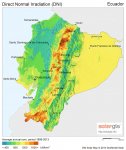

Just a word of caution here. The makers of these maps did not color-code all maps the same. So red on one map means something different than red on another. On Ecuador the scale tops out at 1800, where on the map of Europe, the scale tops out at 2400. Ergo, although Quito looks like it might have DNI similar to central Spain, actually its DNI is more comparable to the DNI in southern Italy or Greece. Which certainly isn't bad, and remains very promising. At Hacienda Zuleta the TerraLiner's roughly 19 KW of solar arrays should then operate at nearly maximal efficiency. The owner of the first TerraLiner could then justifiably claim that he/she would like to glamp at Zuleta for 4 or 5 months in order to empirically test the effectiveness of the TerraLiner's autonomous camping abilities, in a highland-temperate, equatorial climate. Which would be true.
**************************************************
8. Tapping into the farm network
**************************************************
Now it may turn out that, despite its status as a major riding center, Hacienda Zuleta is a bit too "upscale" to host a motorhome on its property. Zuleta's very beautiful but simple rooms are not exactly cheap, although accommodation does include all meals and non-alchoholic beverages -- see http://zuleta.com/rates-and-reservations-for-vacations-in-ecuador-eco-lodge-and-hacienda/ :




**************************************************
CONTINUED IN NEXT POST
.
CONTINUED FROM PREVIOUS POST
**************************************************
6. Equine Tourism as a portal to farm glamping
**************************************************
As most people know, tourism companies have rapidly multiplied over the last few decades, with the fastest growing and most successful being those that serve niche markets, for instance, African safari tourism, charter-boat tourism, diving tourism, bird-watching tourism, garden tourism, opera tourism..... the list is endless. There also exists a niche known as "equine tourism", and equine tourism companies could serve the TerraLiner as veritable world guides to farms that have horses across the planet. Many equine tourism companies offer horseback riding tours that run from point A to point B, staying at various farms or eco-lodges along the way. Like hiking tourism, only with horses -- see http://www.equestrian-escapes.com/about-us/ , http://www.unicorntrails.com/latinamerica/ecuador/avenueofvolcanoestrail/ , http://www.unicorntrails.com/latinamerica/ecuador/wildandes/ , https://www.inthesaddle.com/rides/view/41_cotopaxiadventure_andes_ecuador , and http://www.equitours.com/horseback-riding/hacienda-to-hacienda-ride/ .
Now here is the thing: farms that have large stables and ample riding facilities, will also host competitions, and at competitions horse-lovers will bring their own horses in specialized campers called "horse-boxes". We have already seen horse-boxes earlier in the thread. For instance, Ketterer horse-boxes were already mentioned on pages 3 and 11 at http://www.expeditionportal.com/for...w-6x6-Hybrid-Drivetrain?p=1566706#post1566706 and http://www.expeditionportal.com/for...w-6x6-Hybrid-Drivetrain?p=1562631#post1562631 , and also see page 76 at http://www.expeditionportal.com/for...ybrid-Drivetrain/page76?p=1674213#post1674213 . Horseboxes other than Ketterer were then discussed at length in a posting series from #1182 to #1186, at http://www.expeditionportal.com/for...w-6x6-Hybrid-Drivetrain?p=1742940#post1742940 and following. Horse-boxes are part mobile horse-stable, and part luxury camper. So any riding center or equestrian farm that allows people to visit with their own personal horse-boxes, and camp in them, is in effect an RV campground that accepts very large motorhomes, because horse-boxes are almost never small.
Recall that horse-boxes often have configurations that look very much like 3-axle freight trucks towing drawbar trailers, except that horse-boxes typically look more posh, like Class-A motorhomes with slide-outs:




So I figure that one major source of information that TerraLiner owners will want to consult, is equine tourist companies and their websites. Where large horse-boxes can camp, the TerraLiner should also be able to camp. Indeed, I strongly suspect that Hacienda Zuleta has already seen its fair share of big horse-boxes staying for a few nights to participate in equine competitions, or perhaps longer for diverse reasons. It's just a hypothesis, and I have not researched this very far yet. But large horse-boxes and horse-trailers are a substantial sub-niche in the RV market, and these motorhomes and trailers must be staying at a network of riding centers and equestrian farms.
And not only in Europe or the United States. If there is one thing that farmers worldwide share, it's a passion for horses, even if they themselves do not own very many. So I would wager that Equine Tourism might serve as the perfect "portal" by means of which the TerraLiner could gain access to a worldwide network of excellent farms and ranches where it could glamp; farms that, not incidentally would also have horses. And farms that have already seen their fair share of a certain type of motorhome, namely, the horse-box.
**************************************************
7. Empirically testing the TerraLiner's environmental credentials at an equatorial Eco-Lodge
**************************************************
Furthermore, like most "eco-lodges" and "organic farms", Hacienda Zuleta is enthusiastic about taking on volunteers, as well as interns who are studying agriculture or tourism at university -- see http://zuleta.com/hacienda-zuleta/volunteer/ . It is also engaged in various environmental initiatives, like the rehabilitation of the Andean Condor -- see http://zuleta.com/andean-condor-huasi-project/ :
Details like these suggest that if the TerraLiner were to approach Zuleta with a request to rent land to dry-camp for 4 or 5 months, a hacienda like Zuleta might be very open to the idea. The TerraLiner in itself is a bit of an "environmental project", given that it will have such massive solar. The TerraLiner's energy usage when running A/C in most equatorial climates will be high But in a more temperate highland climate like Zuleta's, the TerraLiner will probably be able to run all camper systems on solar alone, because A/C won't be needed. Furthermore, although lowland Ecuador towards the Pacific has abysmal DNI, highland Ecuador around Quito has excellent DNI, comparable to southern Europe's -- see http://solargis.info/doc/free-solar-radiation-maps-DNI , http://solargis.info/doc/_pics/freemaps/1000px/dni/SolarGIS-Solar-map-DNI-Ecuador-en.png , and http://solargis.info/doc/_pics/freemaps/1000px/dni/SolarGIS-Solar-map-DNI-Europe-en.png :


Just a word of caution here. The makers of these maps did not color-code all maps the same. So red on one map means something different than red on another. On Ecuador the scale tops out at 1800, where on the map of Europe, the scale tops out at 2400. Ergo, although Quito looks like it might have DNI similar to central Spain, actually its DNI is more comparable to the DNI in southern Italy or Greece. Which certainly isn't bad, and remains very promising. At Hacienda Zuleta the TerraLiner's roughly 19 KW of solar arrays should then operate at nearly maximal efficiency. The owner of the first TerraLiner could then justifiably claim that he/she would like to glamp at Zuleta for 4 or 5 months in order to empirically test the effectiveness of the TerraLiner's autonomous camping abilities, in a highland-temperate, equatorial climate. Which would be true.
**************************************************
8. Tapping into the farm network
**************************************************
Now it may turn out that, despite its status as a major riding center, Hacienda Zuleta is a bit too "upscale" to host a motorhome on its property. Zuleta's very beautiful but simple rooms are not exactly cheap, although accommodation does include all meals and non-alchoholic beverages -- see http://zuleta.com/rates-and-reservations-for-vacations-in-ecuador-eco-lodge-and-hacienda/ :




**************************************************
CONTINUED IN NEXT POST
.
Last edited:










